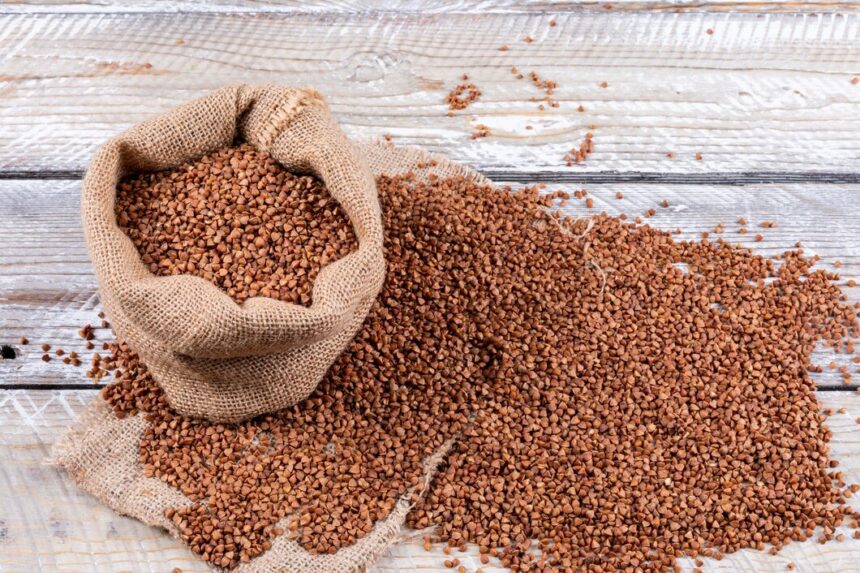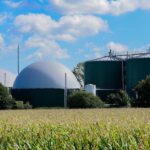Buckwheat (Fagopyrum esculentum) is an increasingly popular crop in South Africa due to its adaptability to various climates, quick growth cycle, and numerous health benefits. This hardy plant can improve soil health and supports biodiversity by attracting pollinators. In this article, we’ll provide a detailed guide for South African farmers on the process of growing buckwheat from seed to harvest, including essential inputs, machinery, and management practices.
Stage 1: Land Preparation
1.1 Soil Requirements
- Soil Type: Buckwheat thrives in well-drained, loamy soils with a pH between 6.0 and 7.5. It can also grow in poorer soils, but high fertility is ideal for better yields.
- Soil Testing: Conduct a soil test to assess nutrient levels and pH. This helps in determining the appropriate amendments needed.
1.2 Land Preparation Process
- Tillage: Use a plough to till the land to a depth of 15–20 cm, ensuring a fine seedbed. This helps improve aeration and drainage.
- Weed Control: Implement pre-plant herbicides or mechanical weeding to reduce weed pressure before planting, as buckwheat can struggle in weedy conditions.
Stage 2: Seed Selection and Planting
2.1 Seed Selection
- Varieties: Choose between different buckwheat varieties, such as common buckwheat, black buckwheat, or Tartary buckwheat. Common buckwheat is the most widely cultivated for grain production.
- Seed Rate: Use a seeding rate of about 60 to 80 kg/ha, depending on the variety and planting method.
2.2 Planting Process
- Optimal Planting Time: Plant buckwheat in South Africa during the spring (September to November) when soil temperatures reach at least 10°C.
- Planting Method: Use a seed drill or broadcast method. Ensure seeds are planted at a depth of 2–5 cm to encourage proper germination.
- Row Spacing: Space rows about 15–25 cm apart. This spacing facilitates optimal sunlight exposure and air circulation.
Stage 3: Growth Stages
3.1 Germination and Emergence
- Germination Time: Seeds usually germinate within 4–10 days under ideal conditions.
- Water Requirements: Buckwheat needs about 25–50 mm of rainfall during the germination stage. If there’s insufficient rainfall, consider irrigation.
3.2 Vegetative Growth
- Duration: The vegetative stage lasts for about 4–6 weeks.
- Water Requirements: Buckwheat requires consistent moisture; aim for about 40 mm per week during this stage. Monitor soil moisture to avoid drought stress.
- Fertilization: Apply a balanced fertilizer high in phosphorus and potassium at planting, following soil test recommendations. Typical rates are 200 kg/ha of a 5-10-15 NPK fertilizer.
3.3 Flowering
- Duration: Flowering occurs approximately 6–8 weeks after planting.
- Pollination: Buckwheat is self-pollinating but benefits from insect pollinators. Encourage beneficial insects by planting companion flowers.
3.4 Seed Development
- Duration: Seed filling occurs in the weeks following flowering.
- Water Requirements: Continue monitoring moisture levels, ensuring the crop receives 30–40 mm of water per week.
Stage 4: Harvesting
4.1 Harvest Timing
- Harvest Readiness: Buckwheat is ready for harvest when the seeds turn brown and the hulls are hard, usually 10–12 weeks after flowering.
- Moisture Content: Harvest when seed moisture is around 14–18% for optimal storage.
4.2 Harvesting Process
- Machinery Required: Use a combine harvester or a sickle bar mower followed by a thresher for small plots. For larger farms, a self-propelled harvester is ideal.
- Post-Harvest Handling: Immediately after harvesting, dry the seeds to a moisture content of about 12% to prevent mold and deterioration.
Stage 5: Storage
5.1 Storage Conditions
- Containers: Store buckwheat seeds in clean, dry, and well-ventilated containers. Use airtight containers to prevent moisture entry and pest infestations.
- Temperature and Humidity: Aim for a cool, dry environment with temperatures below 15°C and humidity below 60% to ensure seed viability.
5.2 Pest and Disease Management
- Common Diseases: Look out for powdery mildew and downy mildew, which can occur during damp conditions. If spotted, treat with fungicides such as chlorothalonil or copper-based products.
- Insect Pests: Aphids and leafhoppers can affect buckwheat. Monitor crops regularly; if infestations are severe, apply appropriate insecticides.
Inputs Required
Fertilizers:
- Use a balanced NPK fertilizer based on soil tests.
- Organic options include compost or manure to enhance soil fertility.
Herbicides:
- Consider using pre-emergent herbicides to manage weeds before planting.
- During the growing season, hand weeding or spot herbicide applications may be necessary to control emerging weeds.
Irrigation:
- Drip or sprinkler irrigation systems can help maintain consistent moisture, particularly during dry spells.
Machinery:
- Plough: For land preparation.
- Seed Drill: For efficient planting.
- Combine Harvester: For harvesting.
- Sprayers: For applying pesticides and fertilizers.
Growing buckwheat can be a rewarding endeavor for South African farmers looking for a nutritious and versatile crop. By understanding each growth stage, from land preparation to harvest and storage, farmers can optimize their practices to enhance yield and quality. With careful management of soil health, pest and disease control, and proper irrigation, buckwheat can thrive in diverse farming conditions across the country. Embrace buckwheat as a valuable addition to your crop rotation, contributing to sustainable farming practices and improved biodiversity in South African agriculture.
Join 'Farmers Mag' WhatsApp Channel
Get the latest Farming news and tips delivered straight to your WhatsApp
CLICK HERE TO JOIN






